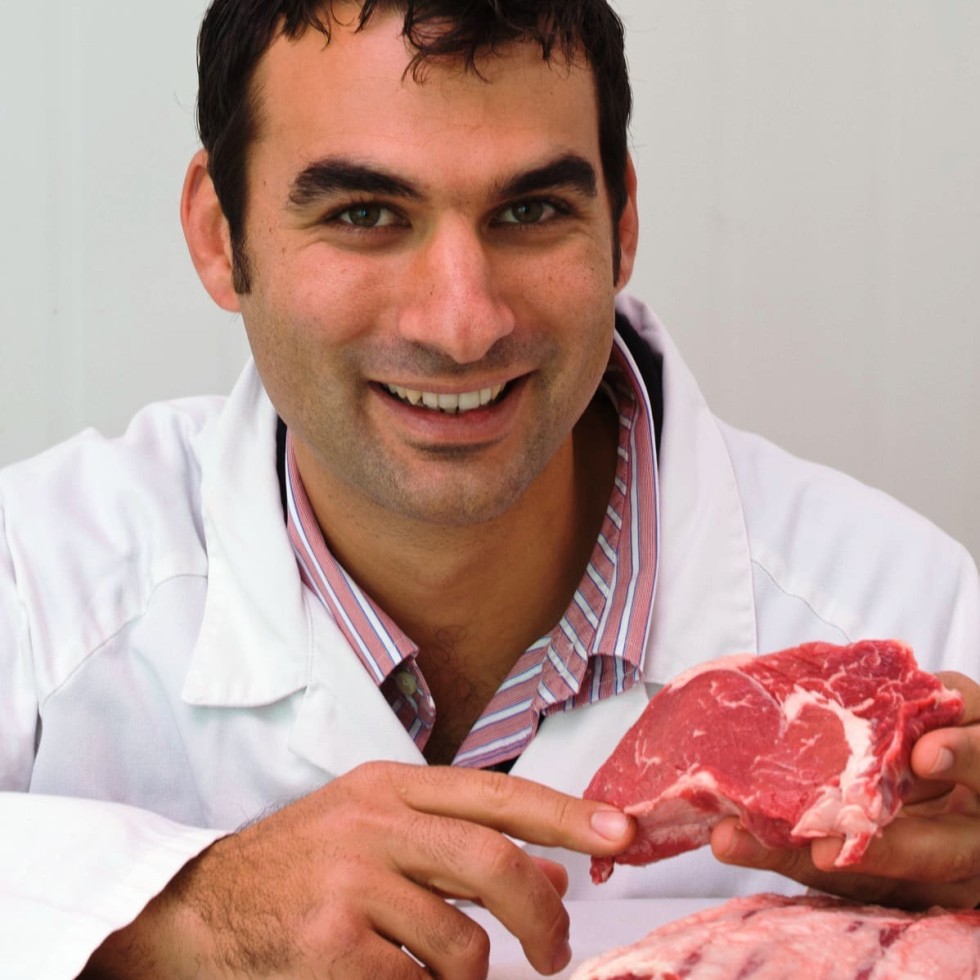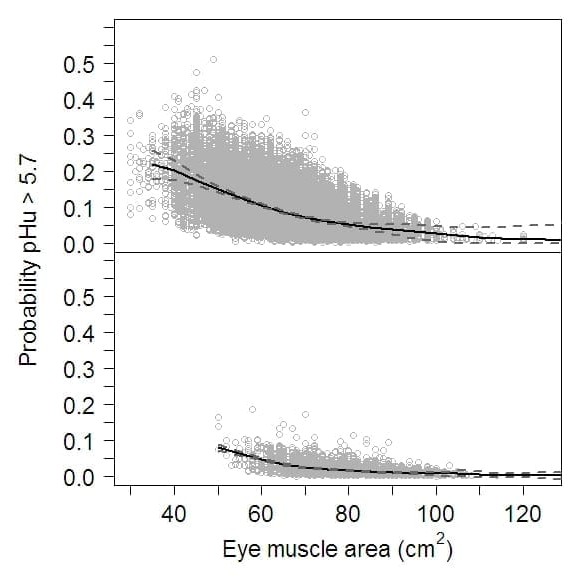 More heavily muscled cattle are more likely to produce the cherry-red coloured steaks preferred by consumers, according to new Beef CRC research conducted at Murdoch University.
More heavily muscled cattle are more likely to produce the cherry-red coloured steaks preferred by consumers, according to new Beef CRC research conducted at Murdoch University.
Meat displaying the trait of ‘dark-cutting’ was very dark in colour, dry to the taste, spoiled quickly and had variable tenderness, said Beef CRC researcher Dr Peter McGilchrist, a lecturer in Production Animal Health and Management at Murdoch University.
Dr McGilchrist’s research discovered that increased muscularity in beef cattle is strongly associated with a reduction in dark cutting, a Beef CRC release issued this morning said.
“The relationship between increased muscling and reduced dark cutting is a very important finding for the beef industry,” Dr McGilchrist said.
“Beef producers can actively select for more heavily muscled cattle knowing it will help to reduce the incidence of dark-cutting carcases in their herd, while also increasing dressing percentage, retail beef yield and processing efficiency,” he said.
In 2009, dark-cutting downgrades cost the Australian beef industry about $35 million. The phenomenon is caused by insufficient muscle glycogen reserves in the muscle of an animal at the time of slaughter. If the animal has low glycogen levels in its muscle, the pH (acidity) remains high and the meat will present dark.
For a steak to be a bright cherry-red colour, the pH of the meat must drop from a neutral pH of 7 at slaughter down to an ultimate pH of less than 5.7 in the 24 hours after slaughter. This can only occur if the animal has enough glycogen reserves in its muscles.
Dr McGilchrist found more muscular cattle have a higher concentration of glycogen in their muscle at slaughter, which results in a reduced incidence of dark cutting.
“We initially found this in Angus steers that were the progeny of a herd which had been visually selected for heavier muscling at the NSW Department of Primary Industries,” Dr McGilchrist said.
Further analysis of 204,000 MSA carcase records from Western Australia supported the finding.
The MSA records showed that cattle with a larger eye muscle at the same carcase weight had a lower probability of dark-cutting, Dr McGilchrist said.
Cattle producers should aim for an eye muscle area greater than 70sq cm in a 250kg carcase, he said.
Other factors which impacted on dark-cutting included nutrition throughout the life of the animal.
Heavier cattle with increased fatness also had lower rates of dark-cutting and there was a high incidence of dark-cutting in very light vealer type cattle.
Feedlot finishing and larger mob size also appeared to reduce dark cutting.
“Individuals in larger mobs are thought to be more resilient and use less glycogen during transport and slaughter,” Dr McGilchrist said.
The initial project work was done using high and low muscled Angus steers (around 18 months old) from a NSW DPI herd selected for high and low muscling by Bill McKiernan.
From these cattle researchers took muscle biopsies from three muscles four times while the cattle were alive. On every occasion, the more heavily muscled ones had more glycogen.
When the muscle metabolism of these steers was monitored, the high-muscled cattle were more sensitive to insulin, so they stored more glycogen in their muscle after eating. The high-muscled cattle were also less sensitive to adrenaline, so they depleted less muscle glycogen when stressed (i.e. through the pre-slaughter period).
The follow up study using MSA data from more than 200, 000 carcase records showed that as eye muscle area went up, the probability of having dark-cutters went down.
 MSA data, of course, contains no breed information. Given this, researchers were confident that the effect exists across breeds, because if it wasn’t, the line or the relationship would have been flat or non-existent.
MSA data, of course, contains no breed information. Given this, researchers were confident that the effect exists across breeds, because if it wasn’t, the line or the relationship would have been flat or non-existent.
An important conclusion from the research is that dramatic change in muscling is not required to achieve an outcome, so there is no need to jump to extreme, heavily-muscled bulls.
The study has shown (see graph) that once eye muscle area goes above about 75sq cm, there is minimal decrease in probability of being a dark-cutter.
"Shifting cattle to being about 5-10sq cm larger than the national average of 65cm, is all that is required," Dr McGilchrist said.
"But we also need to increase muscling whilst maintaining subcutaneous fat levels and increasing intra-muscular fat. That's a tough ask of genetics, but animals with + muscling, + fat and + IMF do exist," he said.
